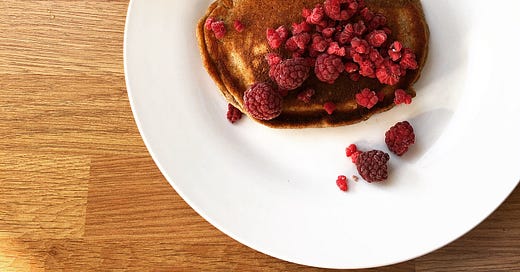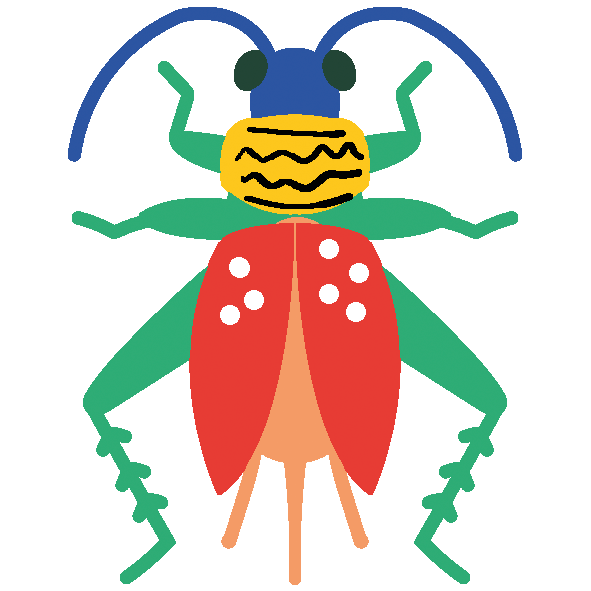This week, we interviewed Emilie Filou, who writes Buzzing, a publication covering the emergence of insects as a food source.
This interview has been lightly edited for length and clarity.
What’s your Substack about in one sentence?
Buzzing is a newsletter exploring the growing use of insects as food (for people) and feed (for animals).
What motivated you to start a publication focused solely on eating insects?
The first time I properly came across the concept of insects as food was in 2019, with a brilliant project in Madagascar which explored the feasibility of using insects as a sustainable source of protein to alleviate pressure on endangered animals that were being hunted for meat by poor rural communities suffering from malnutrition. Before this project, I knew people ate insects, but I’d never really given it much thought and I’d certainly never asked myself why I didn’t.
Once I started looking into it – the fact that insects were nutritious, sustainable and could increase the circularity of our food production systems – I was staggered by their potential, my own ignorance and the fact that there was a whole industry emerging to produce them in the Western world. Within a few months, I’d decided I wanted to write a nonfiction book exploring this new industry. Then Covid-19 came, and all the travel I’d planned to start writing my book proposal went out the window. Buzzing was born out of this yearning to keep writing about insects from this perspective.
Some people are disgusted by the thought of eating insects. How did you get over that personally?
What people consider food is a purely cultural construction. Children learn from a very young age how and what to eat. They take their cues from their parents, relatives, friends and the broader society they live in. This is why I think smelly cheese is delicious (I’m French) whilst killer hornets are revolting, but most people in Japan think eating cheese is an abomination and that I don’t know what I’m missing by not eating hornets.
Acknowledging how arbitrary and absurd it was that I would eat prawns but not crickets gave me the impetus to try to overcome my disgust. Also, professionally, I felt that I couldn’t write an article about edible insects in good faith without at least trying some. This isn’t to say that I will eat any and all insects. I still couldn’t eat cockroaches or arachnids like scorpions and tarantulas. But that’s fine. I don’t like all fruit and veg, so why would I like all insects?
What has changed in the past century about how humans eat insects?
Humans have always eaten insects. The fact that Europeans stopped eating them half a millennia ago is the anomaly. The biggest change of the past 100 years is probably the growing influence of Western diets on traditional diets in Africa and Asia, where insects are being increasingly shunned in favor of more “Western foods.” Young, educated, urban people in developing countries are far less likely to eat insects than older, poorer, rural folks. It is a real shame culturally, but more importantly, it is a food security issue for those in rural areas who depend on insects as a high-value source of protein.
The other big change, which unfortunately is likely to accelerate, is the growing scarcity of insects in the wild. Most insects consumed in Africa, Latin America or Asia are foraged. With a fast-growing human population and worsening climate change, there is plenty of evidence that insect numbers are dwindling.
On the flip side, in the next 100 years will be the fact that insect farming becomes commonplace. Not all insects can be farmed, but those that can could alleviate pressure on wild insect populations and also provide a sustainable, reliable, nutritious source of protein. In the Western world, I am convinced that insects will become mainstream – maybe they won’t be served as whole insects, but they’ll certainly be incorporated as ingredients – and that they will help reduce our meat and fish consumption, as well as our dependency on soy and fishmeal in animal feed.
You cover so many aspects of this space in your publication – interviewing entrepreneurs, reporting on trends, testing food products. What’s been the most surprising insight or experience so far?
I thought that if I could bring myself to eat insects, anybody could. That was very naive. People are incredibly set in their ways and won’t easily be won over by arguments on sustainability and nutrition. That doesn’t mean this won’t change. Forty years ago, no one ate sushi in the U.S. or Europe. But acceptance will take more time than I’d initially suspected.
What are some dishes or products you recommend that readers who are new to eating insects start with?
For anyone really scared of eating insects, I would recommend trying a packaged product containing insects first, such as a snack bar, biscuits or crackers. The taste of the insects (usually crickets) is indiscernible to novices and it’s a great way to “break the ice.” For those who are more adventurous, insect powders are fantastic: they are incredibly versatile, as well as tasty and nutritious. Try adding it to a smoothie, pancake batter or even falafels.
Who’s another Substack writer you’d recommend?
I really enjoy Agents and Books by Kate McKean. Her newsletter is a treasure trove of advice and reassurance for my book proposal. I also recommend Hothouse // Solutions, which is edited by Jemima Kiss and Michael J. Coren. It really speaks to me as an individual determined to play my part in combating the climate emergency. Finally, Bookmarked by Tabatha Leggett. I love the endeavor she’s embarked on to read a book from every country, and a few of the books she’s reviewed are now on my list. I actually heard about it through What To Read a few months back!
Subscribe to Emilie’s newsletter, Buzzing, or find her on her website or Twitter.






Share this post